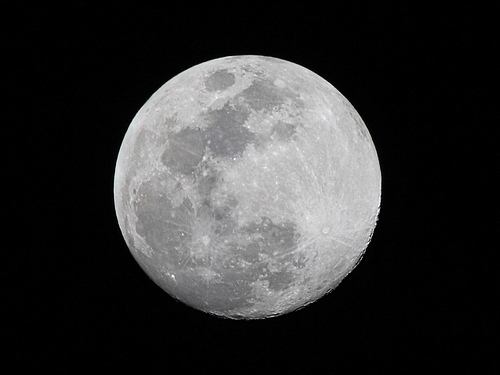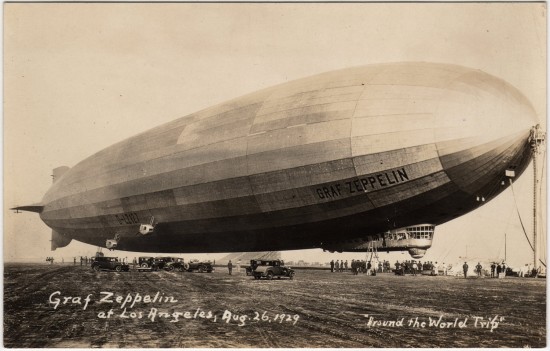On July 31, 1969 — forty years ago today — Mariner-6 flew by Mars. Along with Mariner-7, Mariner-6 comprised a dual-spacecraft mission to study the Martian surface and atmosphere. The Mariner-6 flyby gave NASA and the Jet Propulsion Laboratory the chance to make minute changes to the profile before Mariner-7 flew by. As noted on the National Space Science Data Center page,
On 29 July, 50 hours before closest approach, the scan platform was pointed to Mars and the scientific instruments turned on. Imaging of Mars began 2 hours later. For the next 41 hours, 49 approach images (plus a 50th fractional image) of Mars were taken through the narrow-angle camera. At 05:03 UT on 31 July the near-encounter phase began, including collection of 26 close-up images…. Closest approach occurred at 05:19:07 UT at a distance of 3431 km from the martian [sic] surface.
But no, it wasn’t Mariner-6 that smashed into the moon: Forty-five years ago today, in 1964, the Ranger-7 spacecraft impacted the surface of the moon. It had been launched on July 28th, and sent back over 4,000 close-up images of the lunar surface before it hit.
So where did Ranger-7 hit? Mare Nubium (the Sea of Clouds):

(Final image taken by Ranger-7 camera A, July 31, 1964, of the floor of Mare Nubium, 2-1/2 seconds before impact. NASA image.)
If you’re not sure why Mare Nubium is significant to me, read a little further and it will all become clear.
Another lunar impact happened ten years ago today — July 31, 1999 — when the Lunar Prospector spacecraft hit the moon. It was deliberately aimed into a crater near the south pole, where it was suspected cometary ice may have been deposited. The mission planners hoped that the Lunar Prospector would hit a patch of icy soil and release a plume of water that sensors on earth would detect; however, the detectors did not pick up the signature of a watery plume. The NASA press release outlined several possible explanations for the failure to detect any water:
- the spacecraft might have missed the target area;
- the spacecraft might have hit a rock or dry soil at the target site;
- water molecules may have been firmly bound in rocks as hydrated mineral as opposed to existing as free ice crystals, and the crash lacked enough energy to separate water from hydrated minerals;
- no water exists in the crater and the hydrogen detected by the Lunar Prospector spacecraft earlier is simply pure hydrogen;
- studies of the impact’s physical outcome were inadequate;
- the parameters used to model the plume that resulted from the impact were inappropriate;
- the telescopes used to observe the crash, which have a very small field of view, may not have been pointed correctly;
- water and other materials may not have risen above the crater wall or otherwise were directed away from the telescopes’ view.
All of this is important to any future lunar outposts, since any amount of recoverable water on the moon will mean fewer resources that have to be brought up from earth. (It’s important in my novel, too, part of which takes place as colonists bring back ice collected at the south pole to their station on the edge of Mare Nubium … but that’s literally another story.*)
Today — and I mean today in 2009, not today in space history — the Lunar CRater Observation and Sensing Satellite (LCROSS) is en route to its own impact with a shadowed crater near the lunar south pole. It will impact on or about October 9th. You can read more about LCROSS on this NASA page.
___
*Still no luck yet in finding a literary agent or publisher willing to take on my novel of survival and sacrifice on the moon. But someday I hope WALKING ON THE SEA OF CLOUDS will see print.



 by
by 

















